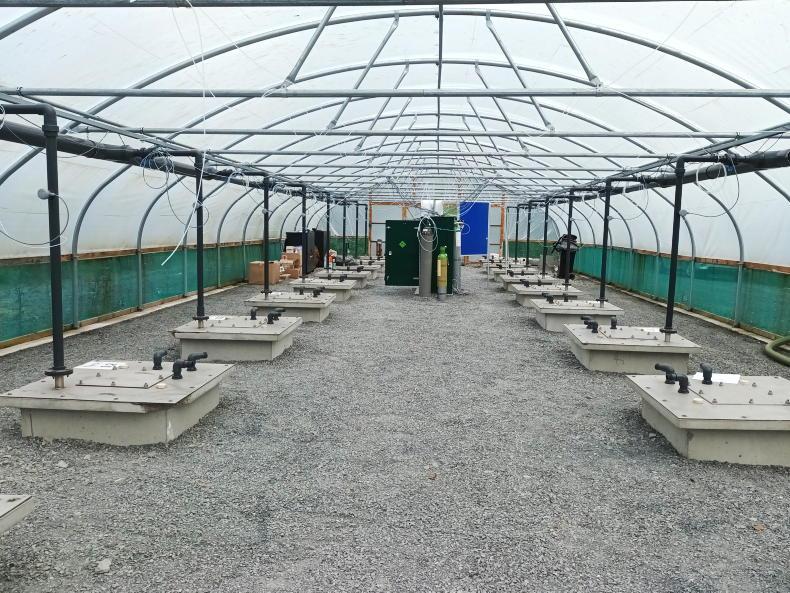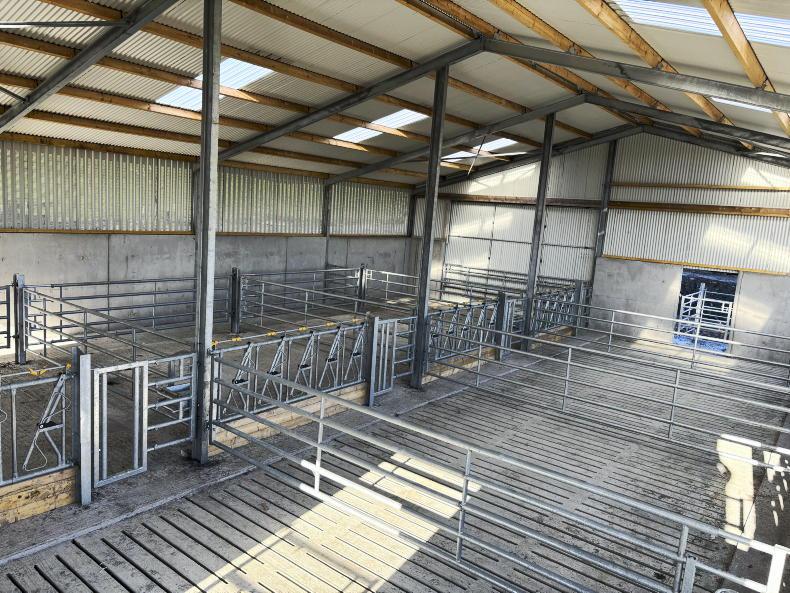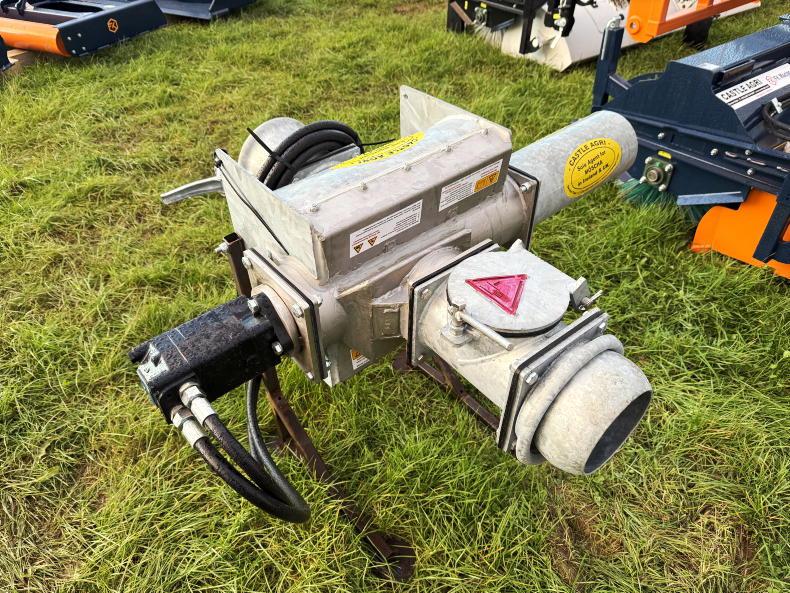Slurry storage has been an issue for many years now. A lengthening of the closed period, which now runs two weeks longer than two years ago, as well as the seemingly increased variability in weather patterns, has resulted in farmers looking to increase slurry storage on their farms.
Current prices of construction, difficulties in being granted planning approval and the uncertainty surrounding stock numbers have made this difficult to finance and justify.
Changes surrounding slurry storage are afoot. Teagasc has been commissioned to analyse slurry storage on 100 farms over the past couple of months, with the expectation that requirements have been underestimated by 30% to 40%, and current dairy cow and suckler cow requirements sitting at 0.33m³ and 0.29m³/week, respectively.
An increase of 30% on the dairy figure will require 0.1m³/week more storage, or 1.6m³ to 2.2m³ more per cow.
Taking the median figure of 1.9m³ over a typical 100-cow herd, 190m³ (41,794 gallons), a farmer would be required to build the equivalent of roughly a four-bay tank with a 14ft 6in slat over it with agitation points at either end.
Total tank dimensions would be 19.2m long, 4.7m wide and 2.4m deep, and with a 200mm freeboard, this would equate to a usable capacity of 198m³.
TAMS costing put this tank at €21,140, or €106/m³ of usable storage. The reality of on-the-ground prices will likely push this tank into the figure of €24,000, €240/cow.
A more positive note is that the Department of Agriculture is seeking a sanction from the European Commission to amend the Rural Development Programme and the CAP strategic plan to provide for a 60% grant rate and a dedicated €90,000 ceiling for organic nutrient storage investments from January 2025.
This 60% rate would hopefully be open to all farmers (similar to the Farm Safety Scheme) and be irrespective of age, gender or education.
The one caveat with it would likely be that farmers would have to comply with slurry storage rules before receiving grant aid for this additional storage, an issue that has been raised many times regarding TAMS II and TAMS III.
Whether the compliancy figure would be based on existing or new storage figures will be a major deciding factor here on who is eligible, and Teagasc survey results, with preliminary results posted soon.
A final report sometime in 2025 will tell a more definitive tale on what percentage of farmers are likely to fall short of this extra storage requirement.
Taking the above tank into consideration (using €24,00 as an actual cost), a farmer would be left footing a bill of €11,316. However, this is before slats or a shed would be constructed over it.
Slats alone will cost in the region of €6,000 plus VAT.
If the tank is to remain uncovered, rainfall over the closed period needs to be factored in.
Take Co Galway, for example, where mean rainfall over the closed period is 490mm. This (along with an additional 100mm of freeboard for open tanks) reduces our usable tank capacity down to 145.2m³, meaning if we are to leave the tank uncovered, we will have to increase the tank in size.
The new ceiling for slurry storage would be of major benefit to many. I have witnessed on some larger projects that much of the grant aid is swallowed up with the tank before erection of the shed even begins, as both slurry tanks and animal housing both fall within the Animal Welfare and Nutrient Storage Scheme (AWNSS).
This is the first year in which all dairy farmers not on a liquid milk contract must have four weeks’ soiled water storage on-farm. The current figure for soiled water storage sits at 30l/cow/week, or 0.21m3/week.
Again, this figure is currently being analysed by Teagasc, with the expectation that it has been low balled and increased storage will be required.
Research currently being conducted on slurry storage could see storage requirements rise by as much as 40%.The cost of this will be variable across farms.New grant aid for standalone tanks at a 60% rate will require EU approval but will be of major benefit.2024 is the first year creamery milk suppliers must have four weeks’ soiled water storage.
Slurry storage has been an issue for many years now. A lengthening of the closed period, which now runs two weeks longer than two years ago, as well as the seemingly increased variability in weather patterns, has resulted in farmers looking to increase slurry storage on their farms.
Current prices of construction, difficulties in being granted planning approval and the uncertainty surrounding stock numbers have made this difficult to finance and justify.
Changes surrounding slurry storage are afoot. Teagasc has been commissioned to analyse slurry storage on 100 farms over the past couple of months, with the expectation that requirements have been underestimated by 30% to 40%, and current dairy cow and suckler cow requirements sitting at 0.33m³ and 0.29m³/week, respectively.
An increase of 30% on the dairy figure will require 0.1m³/week more storage, or 1.6m³ to 2.2m³ more per cow.
Taking the median figure of 1.9m³ over a typical 100-cow herd, 190m³ (41,794 gallons), a farmer would be required to build the equivalent of roughly a four-bay tank with a 14ft 6in slat over it with agitation points at either end.
Total tank dimensions would be 19.2m long, 4.7m wide and 2.4m deep, and with a 200mm freeboard, this would equate to a usable capacity of 198m³.
TAMS costing put this tank at €21,140, or €106/m³ of usable storage. The reality of on-the-ground prices will likely push this tank into the figure of €24,000, €240/cow.
A more positive note is that the Department of Agriculture is seeking a sanction from the European Commission to amend the Rural Development Programme and the CAP strategic plan to provide for a 60% grant rate and a dedicated €90,000 ceiling for organic nutrient storage investments from January 2025.
This 60% rate would hopefully be open to all farmers (similar to the Farm Safety Scheme) and be irrespective of age, gender or education.
The one caveat with it would likely be that farmers would have to comply with slurry storage rules before receiving grant aid for this additional storage, an issue that has been raised many times regarding TAMS II and TAMS III.
Whether the compliancy figure would be based on existing or new storage figures will be a major deciding factor here on who is eligible, and Teagasc survey results, with preliminary results posted soon.
A final report sometime in 2025 will tell a more definitive tale on what percentage of farmers are likely to fall short of this extra storage requirement.
Taking the above tank into consideration (using €24,00 as an actual cost), a farmer would be left footing a bill of €11,316. However, this is before slats or a shed would be constructed over it.
Slats alone will cost in the region of €6,000 plus VAT.
If the tank is to remain uncovered, rainfall over the closed period needs to be factored in.
Take Co Galway, for example, where mean rainfall over the closed period is 490mm. This (along with an additional 100mm of freeboard for open tanks) reduces our usable tank capacity down to 145.2m³, meaning if we are to leave the tank uncovered, we will have to increase the tank in size.
The new ceiling for slurry storage would be of major benefit to many. I have witnessed on some larger projects that much of the grant aid is swallowed up with the tank before erection of the shed even begins, as both slurry tanks and animal housing both fall within the Animal Welfare and Nutrient Storage Scheme (AWNSS).
This is the first year in which all dairy farmers not on a liquid milk contract must have four weeks’ soiled water storage on-farm. The current figure for soiled water storage sits at 30l/cow/week, or 0.21m3/week.
Again, this figure is currently being analysed by Teagasc, with the expectation that it has been low balled and increased storage will be required.
Research currently being conducted on slurry storage could see storage requirements rise by as much as 40%.The cost of this will be variable across farms.New grant aid for standalone tanks at a 60% rate will require EU approval but will be of major benefit.2024 is the first year creamery milk suppliers must have four weeks’ soiled water storage. 









SHARING OPTIONS